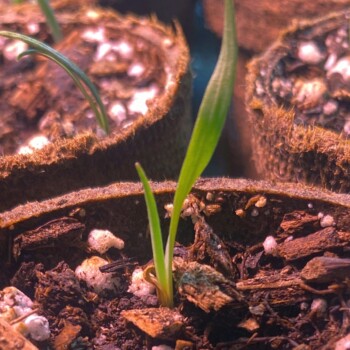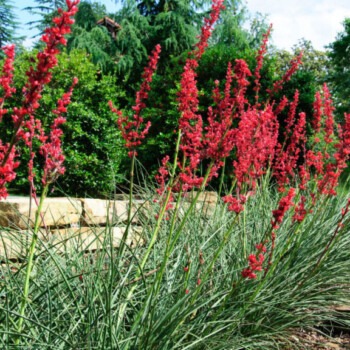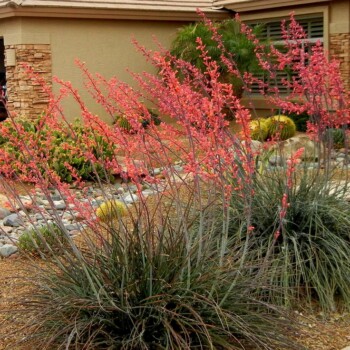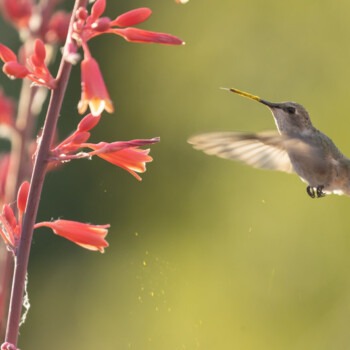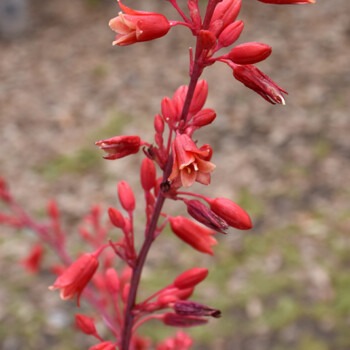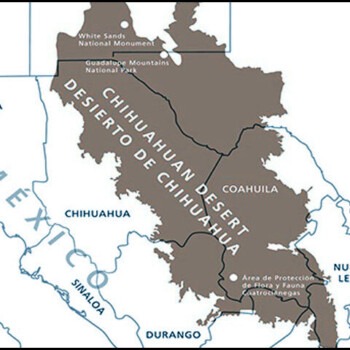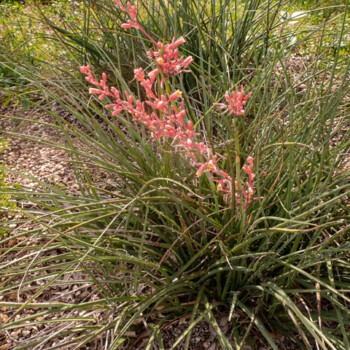Introduction
Hesperaloe parviflora is a succulent plant found in the Chihuahuan Desert growing in desert areas, prairies, rocky areas, and mesquite groves. It is a tough, adaptable, durable plant that has found use in gardens. It has a variety of common names including red Yucca, Coral Yucca, Red-flowered False Yucca, and Hummingbird Yucca. There are at least five species of Hesperaloe, most hailing from Mexico.
The Details
H. parviflora is not a real Yucca, but it is easy enough to mistake it for a Yucca because H. parviflora and Yuccas are both members of the century plant family. Its tough narrow, arching, sword-like, blue-green, evergreen leaves are 2-3 feet long (or even 4 feet) but only about 1 inch wide. The leaves grow in basal clumps like some Yuccas too. But the red flowers are a giveaway. There are no Yuccas with red flowers. One type has been selected for gardens with creamy-yellow flowers, but the red-flowered plants are the most attractive. Flower spikes may reach 6 feet tall on large plants, and seeds are easily produced in pods. Some gardeners gather the seeds and grow new plants.
Its growth rate depends on temperature and water. Hot summers are no problem. Generally, it is a fast grower, making a happy plant in two years. The long-lived flower spines can reach six feet and are often upright. However, in gardens where the plants receive lots of water, the spines may bend.
H. parviflora is a source of food for bees, butterflies, and hummingbirds. The seeds are eaten by some small animals. Thus, it is an important plant in desert areas, encouraging biodiversity. However, it can be noxious or mildly toxic to some mammals including deer and pets.
Though it comes from southern areas, it is a hardy plant and can grow in USDA hardiness zones 6 or 7 (Kansas, Ohio, Pennsylvania, and even the desert parts of western states as far north as Washinton state in low elevations). In the coldest areas, it might benefit by planting against a south-facing wall where reflected heat might help it in winter. In very cold winters it may freeze to the ground only to rebound in spring.
Additional Reading: Red Yucca

